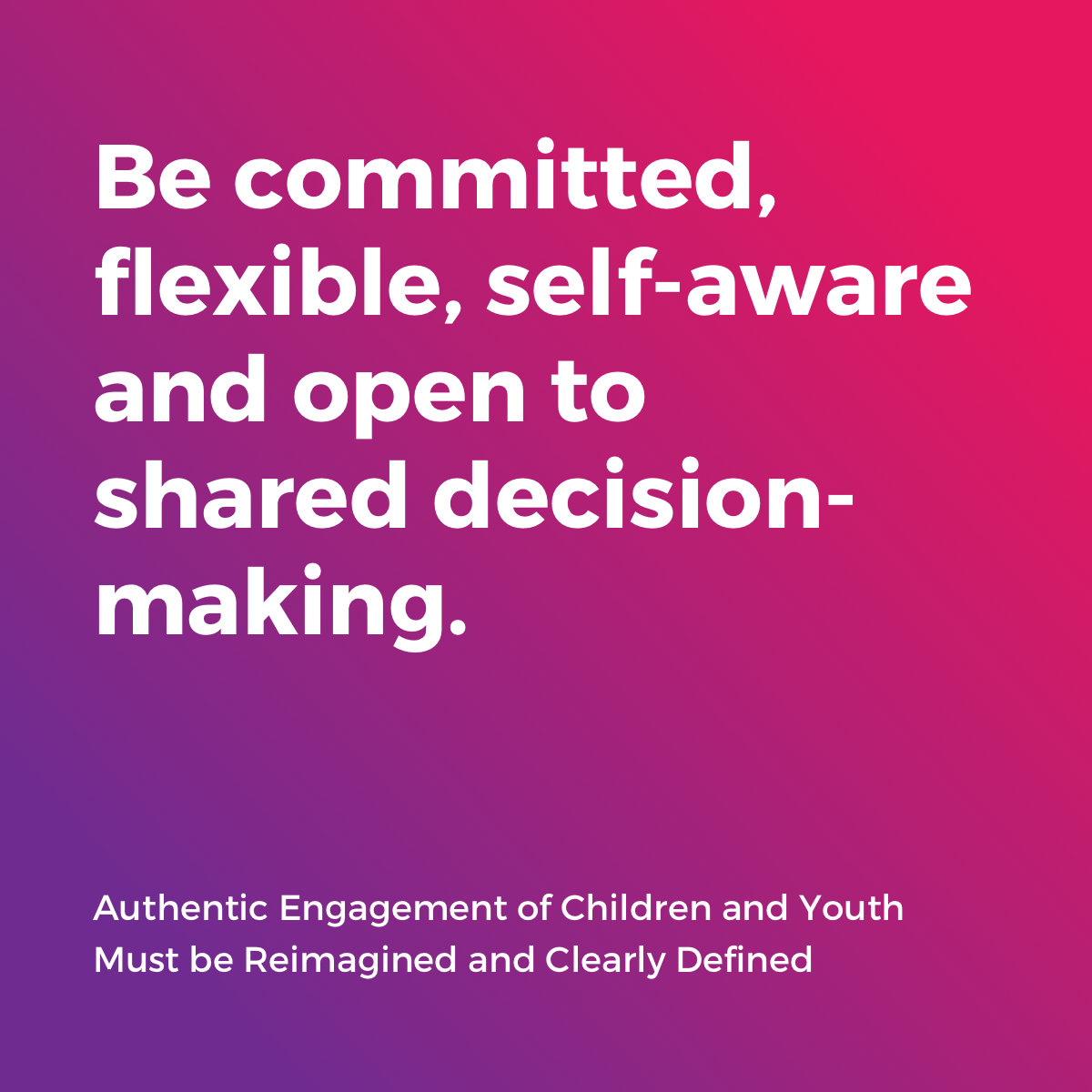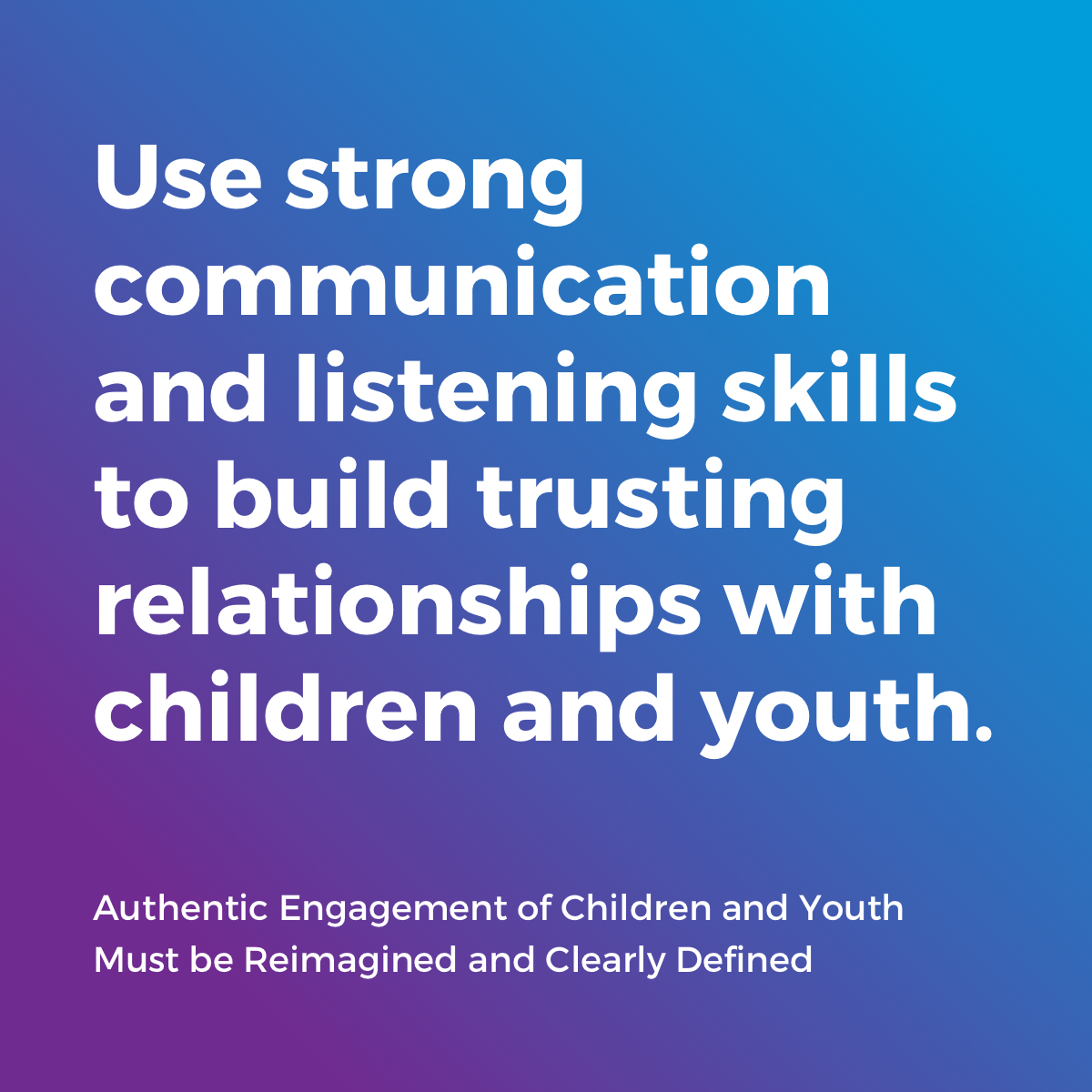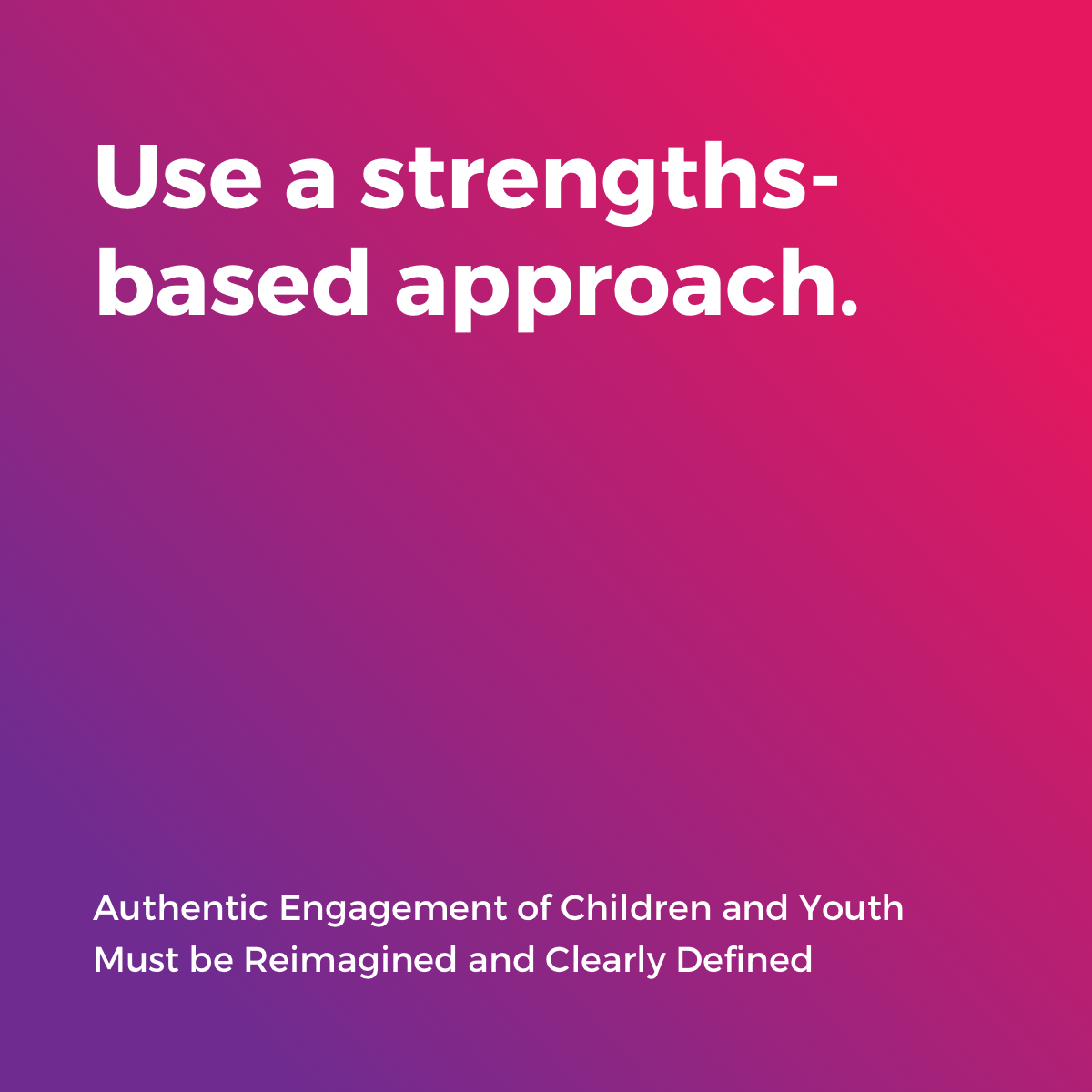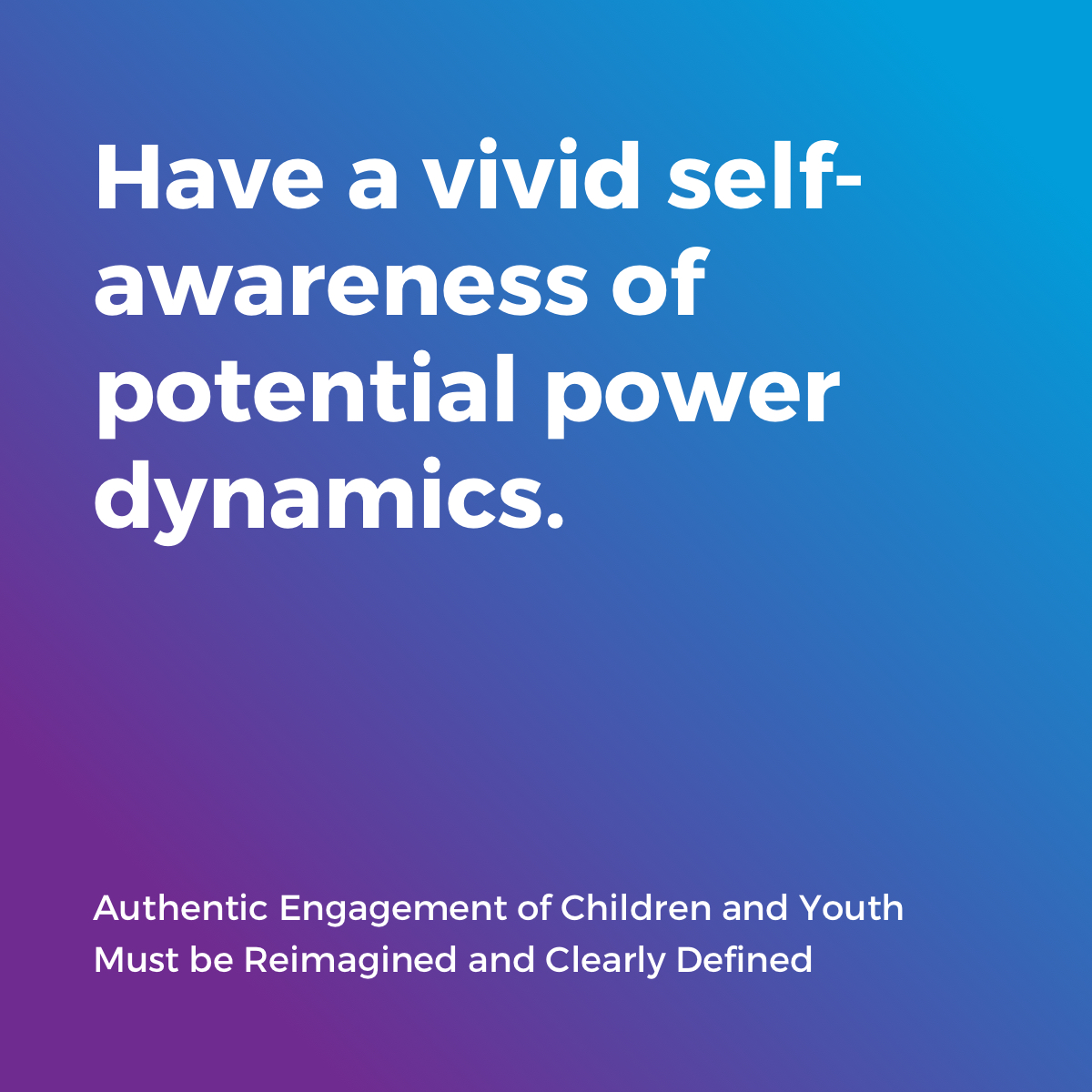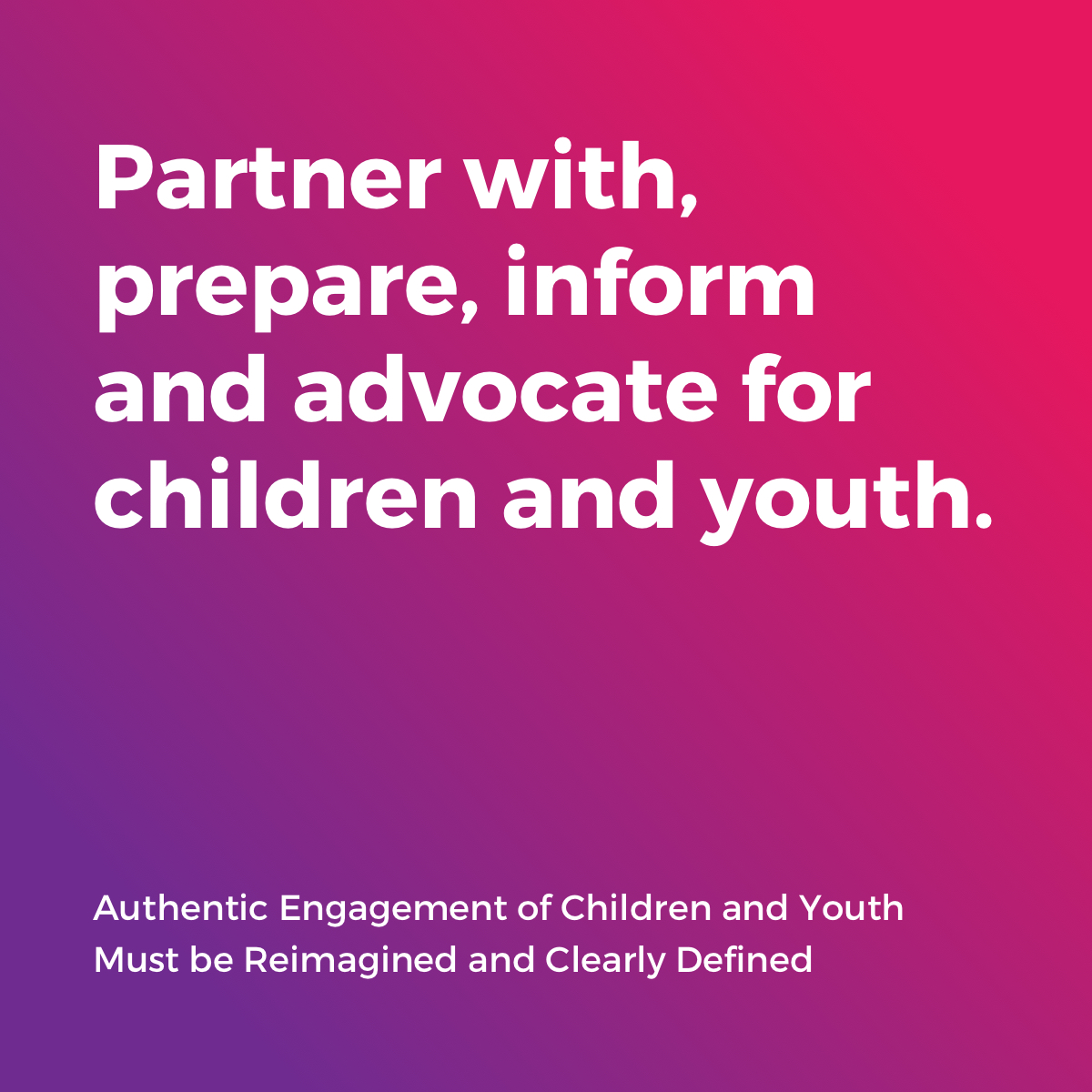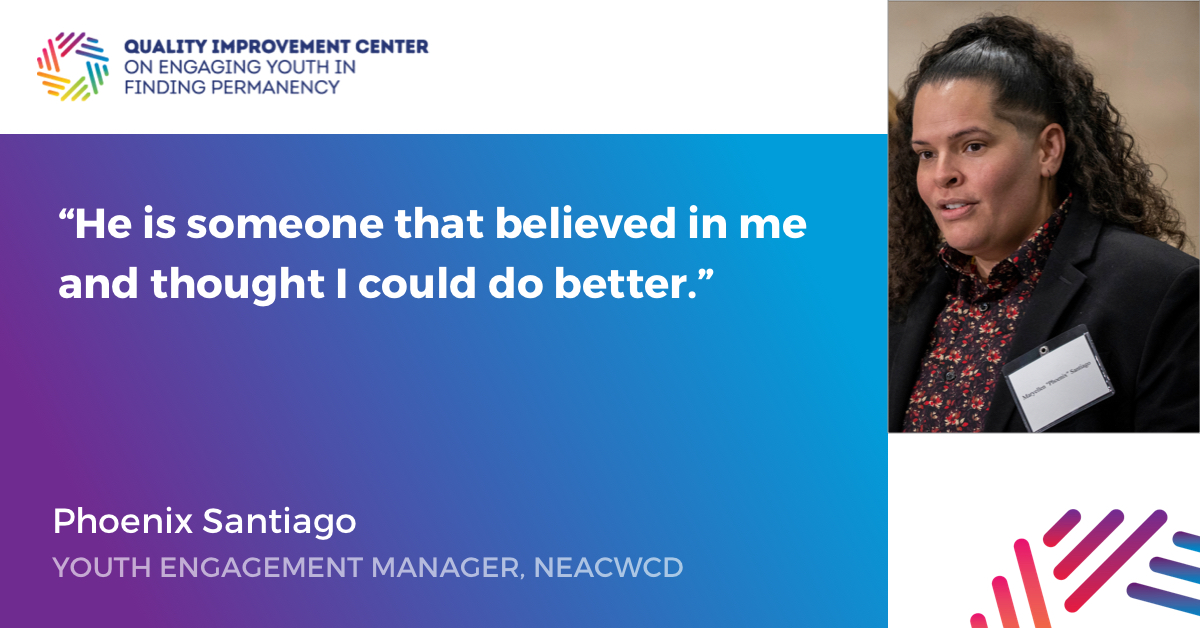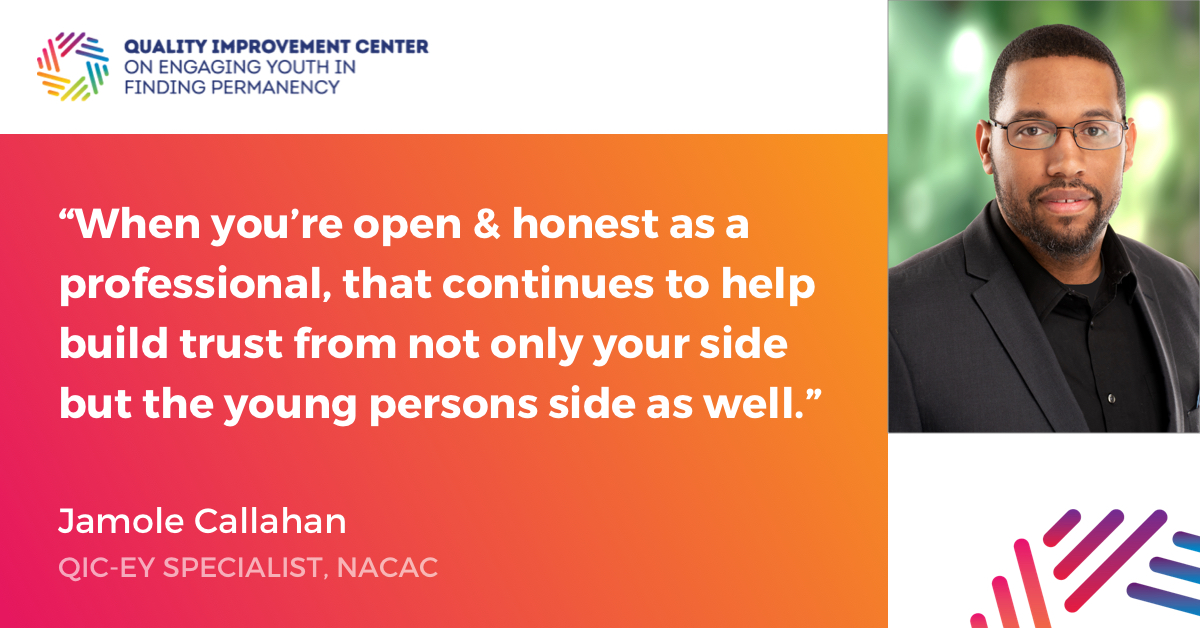The Lesson
One of the fundamental lessons learned during the first year of the QIC-EY project is that a huge variance exists among child welfare systems and professionals across the United States in how they define youth engagement. Therefore, before the work of ensuring authentic engagement of children and youth in care could begin, the QIC-EY team had to develop a clear definition that would serve as a centerpiece.
To inform definition development and to set a solid foundation for the QIC-EY project, the team began by conducting an environmental scan of the current child and youth engagement landscape, identifying strengths as well as areas where improvement is needed. The scan included a survey of state child welfare systems, a literature review and interviews with experts. A foundational element of the QIC-EY’s environmental scan was the Literature Review, which summarized numerous articles to determine the changes needed in the system and in staff perspectives to ensure authentic youth engagement. This review uncovered a variety of workforce competencies, including the ability to partner respectfully with children and youth, to communicate with them openly and honestly and to build trusting relationships.
The QIC-EY leadership also worked in conjunction with the project’s National Youth Engagement Advisory Council and core partners. This collective effort resulted in the QIC-EY’s expanded definition of engagement which includes children and youth to emphasize that engagement should take place early in a child’s life and continue over time.
This is the definition that the QIC-EY team developed:
Authentic engagement means actively and intentionally partnering with children and youth about their lives, on their terms, in ways that make sense to them. To engage children and youth authentically, child welfare staff need to apply all of the following principles and practices:
- Be committed, flexible, self-aware and open to shared decision-making.
- Use strong communication and listening skills to build trusting relationships with children and youth.
- Be guided by knowledge of child and adolescent development and trauma-informed care.
- Use a strengths-based approach.
- Have a vivid self-awareness of potential power dynamics.
- Support cultural connections.
- Partner with, prepare, inform and advocate for children and youth.
Application of the Lesson
While the work of the QIC-EY will take place over several years, the following real-time applications to elevate your work in child and youth engagement right now. The elements combined in the QIC-EY definition offer prompts that you can use to conduct an informal assessment of your current work as an individual professional or as a team.
Here are a few ways to apply this to your agency/system:
- Review your agency or system’s definition of youth engagement. How does it relate to the definition developed by the QIC-EY team? If you truly wanted to change how children and youth of all ages are involved in decisions that impact their lives, how would you need to revise your agency or system’s definition?
- Listen to the QIC-EY podcasts featuring members of the QIC-EY leadership team who have lived expertise. These short and insightful podcasts bring the QIC-EY definition to life and can aide in your reflections. Listen as individuals and then discuss the content with your colleagues.
Use a Strengths-Based Approach
QIC-EY Podcast
“Characteristics and Competencies Important for Engaging with Children and Youth Authentically” with Phoenix Santiago
As you listen, try to answer:
What examples of a strengths-based approach can you offer as evidence of this key part of empowering children and youth?
Support Cultural Connections
QIC-EY Podcast
“Respecting, Responding to and Maintaining Connections to Cultural Strengths” with Nathan Ross
As you listen, try to answer:
As you strive to become better at understanding and and supporting cultural connections ask yourself how you can better support the child or youth and how doing so can impact the nature of our relationship with children on your caseload.
Partner with Children and Youth
QIC-EY Podcast
“Child and Youth Adult Partnership and Shared Decision Making” with Jamole Callahan
As you listen, try to answer:
When do you see the benefit of your flexibility in ensuring partnership with children and youth are created?

